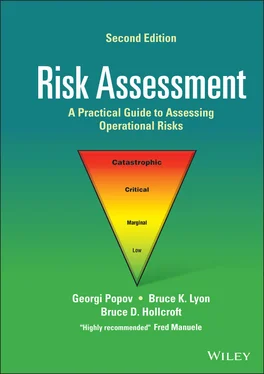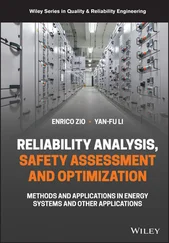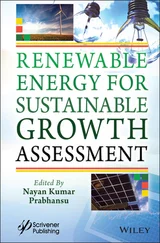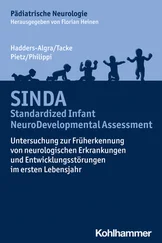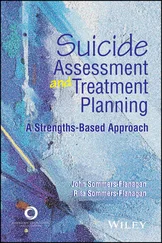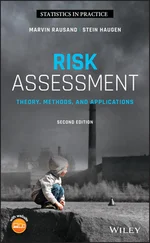Georgi Popov - Risk Assessment
Здесь есть возможность читать онлайн «Georgi Popov - Risk Assessment» — ознакомительный отрывок электронной книги совершенно бесплатно, а после прочтения отрывка купить полную версию. В некоторых случаях можно слушать аудио, скачать через торрент в формате fb2 и присутствует краткое содержание. Жанр: unrecognised, на английском языке. Описание произведения, (предисловие) а так же отзывы посетителей доступны на портале библиотеки ЛибКат.
- Название:Risk Assessment
- Автор:
- Жанр:
- Год:неизвестен
- ISBN:нет данных
- Рейтинг книги:4 / 5. Голосов: 1
-
Избранное:Добавить в избранное
- Отзывы:
-
Ваша оценка:
- 80
- 1
- 2
- 3
- 4
- 5
Risk Assessment: краткое содержание, описание и аннотация
Предлагаем к чтению аннотацию, описание, краткое содержание или предисловие (зависит от того, что написал сам автор книги «Risk Assessment»). Если вы не нашли необходимую информацию о книге — напишите в комментариях, мы постараемся отыскать её.
Explore the fundamentals of risk assessment with references to the latest standards, methodologies, and approaches Risk Assessment: A Practical Guide to Assessing Operational Risks
Risk Assessment: A Practical Guide to Assessing Operational Risks
Risk Assessment — читать онлайн ознакомительный отрывок
Ниже представлен текст книги, разбитый по страницам. Система сохранения места последней прочитанной страницы, позволяет с удобством читать онлайн бесплатно книгу «Risk Assessment», без необходимости каждый раз заново искать на чём Вы остановились. Поставьте закладку, и сможете в любой момент перейти на страницу, на которой закончили чтение.
Интервал:
Закладка:
Table of Contents
1 Cover
2 Title Page Risk Assessment A Practical Guide to Assessing Operational Risks Second Edition Georgi Popov University of Central Missouri Warrensburg, MO USA Bruce K. Lyon Brown & Brown Kansas City, MO USA Bruce Hollcroft PayneWest Insurance, A Marsh & McLennan Agency LLC Company Spokane, WA USA
A Practical Guide to Assessing Operational Risks
3 Copyright Page
4 Preface
5 1 Risk Assessments: Their Significance 1.1 Introduction 1.2 What Is a Risk Assessment? 1.3 Risk Assessment Methods 1.4 The ANSI/ASSP Z690 – 2011 Series 1.5 ANSI B11.0 – 2020: Safety of Machinery 1.6 Risk Scoring Systems 1.7 European Union – Risk Assessment 1.8 OSHA Requirements 1.9 EPA Requirements 1.10 The Chemical Industry – The Extensive Body of Information 1.11 Conclusion References
6 2 Risk Assessment Standards and Definitions 2.1 Introduction 2.2 Risk Assessments and the Safety Professional 2.3 Key Standards Requiring Risk Assessments 2.4 OSHA Compliance and Risk Assessments 2.5 Consensus Standards Requiring Risk Assessment 2.6 ANSI Z10.0 2.7 ISO 45001 2.8 ISO 31000 and ISO 31010 2.9 ANSI/ASSP Z590.3, Prevention Through Design 2.10 ANSI B11.0 Machine Safety 2.11 NFPA 70E 2.12 MIL‐STD‐882E, 11 May 2012, Department of Defense Standard Practice, System Safety 2.13 Key Terms and Definitions 2.14 Summary References
7 3 Risk Assessment Fundamentals 3.1 Introduction 3.2 Risk Assessment Within the Risk Management Process 3.3 Risk Assessments and Operational Risk Management Systems 3.4 The Purpose of Assessing Risk 3.5 The Risk Assessment Process 3.6 Risk Criteria 3.7 Establishing Context 3.8 The Risk Assessment Team 3.9 Risk Identification 3.10 Risk Analysis 3.11 Risk Evaluation 3.12 Risk Treatment 3.13 Communication 3.14 Documentation 3.15 Monitoring and Continuous Improvement 3.16 Summary References
8 4 Defining Risk Assessment Criteria 4.1 Introduction 4.2 Defining Risk Criteria 4.3 Risk Scoring Systems 4.4 Risk Assessment Matrices 4.5 Defining Risk Values 4.6 Risk Factors 4.7 Risk Levels 4.8 Risk Scoring 4.9 Severity of Consequence 4.10 Likelihood of Occurrence 4.11 Exposure 4.12 Risk Reduction and the Hierarchy of Controls 4.13 Acceptable and Unacceptable Risk Levels 4.14 Documenting Risk 4.15 Communicating Risk Criteria 4.16 Summary References Appendix A A. Risk Matrix (adapted/modified from ANSI Z10)
9 5 Fundamental Techniques 5.1 Introduction to Fundamental Hazard Analysis and Risk Assessment 5.2 Assessments Within an Operational Risk Management System 5.3 Hazard Analysis vs. Risk Assessment 5.4 The Hazard Analysis and Risk Assessment Process 5.5 Fundamental Methods 5.6 Informal Methods 5.7 Formal Methods 5.8 Conclusion References Appendix A Appendix B Common Hazards and Descriptions Appendix C Personal Protective Equipment Hazard Assessment Form Example
10 6 Preliminary Hazard and Risk Analysis 6.1 Introduction 6.2 Preliminary Hazard List 6.3 PHAs and Their Application 6.4 The Control of Hazardous Energy 6.5 Fundamental System Safety Tenets 6.6 Conducting a Preliminary Hazard and Risk Analysis (PHRA) 6.7 Scoring Systems 6.8 Practical Application 6.9 Summary References Practical Example
11 7 “What‐if” Analysis Methods 7.1 Introduction 7.2 Traditional What‐if Methods 7.3 Application of What‐if Analysis 7.4 Process Steps for What‐if Analysis 7.5 Introduction to the Structured What‐if Risk Assessment (SWIFRA) 7.6 Severity of Injury or Harm7.7 Case Study – SWIFRA of Chemical Release Event 7.8 CSB Investigation Summary 7.9 Analyzing the Case Study 7.10 Conclusion References
12 8 Failure Mode and Effects Analysis 8.1 Introduction 8.2 Purpose and Use 8.3 Defining Failure Modes 8.4 Risk Description Considerations 8.5 FMEA Process Steps 8.6 Practical Application 8.7 Summary References
13 9 Bow‐Tie Analysis Methodology 9.1 Introduction 9.2 History 9.3 Overview 9.4 Practical Application 9.5 Summary References
14 10 Layers of Control Analysis 10.1 Introduction 10.2 Strategies for Reducing Operational Risk 10.3 Hierarchy of Risk Treatment 10.4 Developing a Risk Treatment Plan 10.5 The Concept of Layers of Protection 10.6 Analyzing Layers of Control 10.7 Layers of Protection Analysis (LOPA) 10.8 LOMA 10.9 Barrier Analysis 10.10 Layers of Control Analysis (LOCA) 10.11 Conclusion References
15 11 Prevention Through Design (PtD) and Design Safety Reviews 11.1 Introduction 11.2 The Concept of Prevention Through Design (PtD) 11.3 PtD Definitions 11.4 Risk Assessment Process and the PtD Model 11.5 Challenges and Obstacles to Overcome 11.6 Standards Requiring Design Safety 11.7 The Review of Designs 11.8 Hazardous Energy Control 11.9 Ergonomic Review of Designs 11.10 Design Review Process 11.11 Hazard Analysis and Risk Assessment in Design 11.12 Conclusion References
16 12 Industrial Hygiene Risk Assessment 12.1 Introduction 12.2 Fundamental Concepts 12.3 US Navy Industrial Hygiene Field Operations Manual 12.4 Alternate Health Risk Ranking Systems 12.5 More Complex Occupational Hygiene Risk Assessment Tools 12.6 Health Risk Assessments and Prioritization 12.7 Modified HRR/IH FMEA Methodology 12.8 Case Study 12.9 Control Banding Nanotool 12.10 Dermal RA 12.11 Occupational Health Risk and PtD Process Alignment 12.12 Summary References
17 13 Machine Risk Assessments 13.1 Introduction 13.2 Machine Safety Standards 13.3 Machine Hazards 13.4 Machine Safeguarding 13.5 Selecting Machines for Assessment 13.6 Risk Assessment of Machines 13.7 Estimating Risk 13.8 Case Study 13.9 Assessment of Machine Maintenance and Service 13.10 Summary Appendix A Machine Safeguards Methods (Adapted from OSHA) References
18 14 Project‐Oriented Risk Assessments 14.1 Introduction 14.2 Fatalities and Serious Incidents 14.3 Error Traps in Nonroutine Tasks 14.4 Management of Change 14.5 Construction Project Work 14.6 Construction Project Risk Assessment 14.7 Safe Work Methods 14.8 Pre‐Task Hazard Analysis 14.9 The Use of Checklists 14.10 Maintenance and Service Work 14.11 Operating Hazard Analysis 14.12 Analyzing Specific Hazards 14.13 Pre‐Entry Hazard Analysis 14.14 Fall Hazard Assessment 14.15 Summary References
19 15 Food Processing Risk Assessments 15.1 Overview 15.2 Introduction to Food Risk 15.3 Risk Assessment Techniques in the Food Industry 15.4 Food Safety‐Related Hazards 15.5 Techniques for Assessing Food Risk 15.6 HACCP 15.7 Integration of Risk Assessment Methods 15.8 PtD and HACCP Integration 15.9 Conclusions References
20 16 Ergonomic Risk Assessment 16.1 Introduction 16.2 Ergonomics and Design 16.3 Ergonomic Hazards 16.4 Ergonomic Risk Factors 16.5 Establishing an Ergonomics Assessment Process 16.6 Assessing Ergonomic Risk 16.7 Ergonomics Improvement Process 16.8 Ergonomic Risk Assessment Tool (ERAT) – A Practical Assessment Tool 16.9 Conclusion Appendix A Sample Ergonomic Responsibilities for Involved Stakeholders Appendix B Sample Ergonomics Training for Involved Stakeholders Appendix C Ergonomic Risk Assessment Tool (ERAT) – Initial Assessment Appendix D Ergonomic Risk Assessment Tool (ERAT) – Post Control Assessment Appendix E Hierarchy of Ergonomic Risk Controls References
21 17 Assessing Operational Risks at an Organizational Level 17.1 Introduction 17.2 Risks to an Organization 17.3 Organizational Risk Management 17.4 Key Terms in Organizational Risk 17.5 Assessing Organizational Risk 17.6 Summary References
22 18 Risk Assessment Applications in Lean Six Sigma and Environmental Management Systems 18.1 Introduction 18.2 Environmental Management Systems (EMSs) 18.3 ISO 14001 Implementation 18.4 Environmental Policy and Planning 18.5 Environmental Aspects 18.6 Identify Environmental Aspects 18.7 Identification Process 18.8 Location, Department, Index, Aspect 18.9 Impacts to Environmental Properties 18.10 Impact Subtotal and Polarity Adjustment 18.11 Impact Severity 18.12 Impact Probability 18.13 Frequency 18.14 Legal Risks 18.15 Current Controls 18.16 Significance Score for Significance Scores without Controls Section 18.17 Personnel Risk 18.18 Significance Scores with Controls Section 18.19 Overall Significance Rating Chart 18.20 EMS and Implementation of Lean Six Sigma Practices 18.21 Conclusions References
Читать дальшеИнтервал:
Закладка:
Похожие книги на «Risk Assessment»
Представляем Вашему вниманию похожие книги на «Risk Assessment» списком для выбора. Мы отобрали схожую по названию и смыслу литературу в надежде предоставить читателям больше вариантов отыскать новые, интересные, ещё непрочитанные произведения.
Обсуждение, отзывы о книге «Risk Assessment» и просто собственные мнения читателей. Оставьте ваши комментарии, напишите, что Вы думаете о произведении, его смысле или главных героях. Укажите что конкретно понравилось, а что нет, и почему Вы так считаете.
